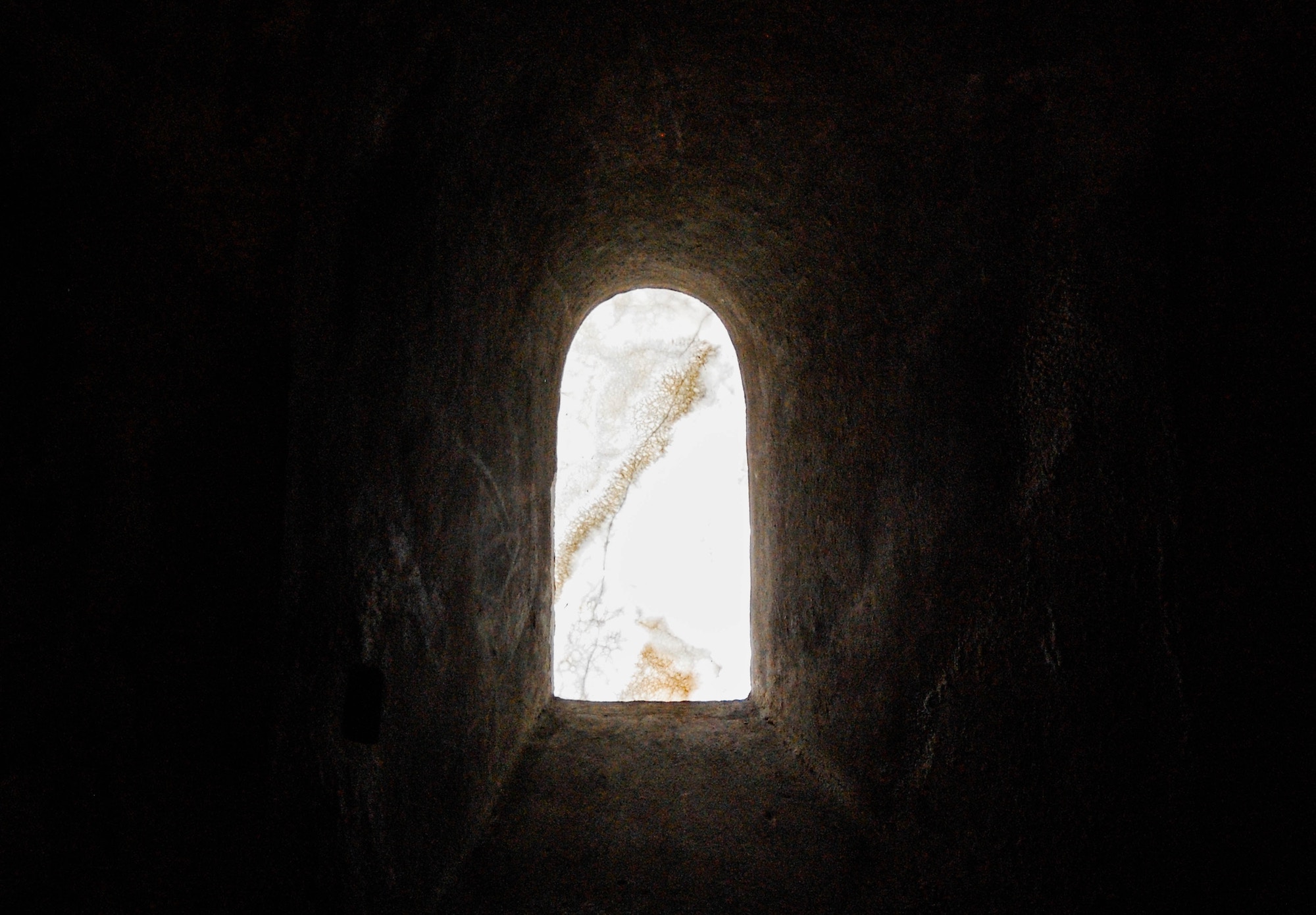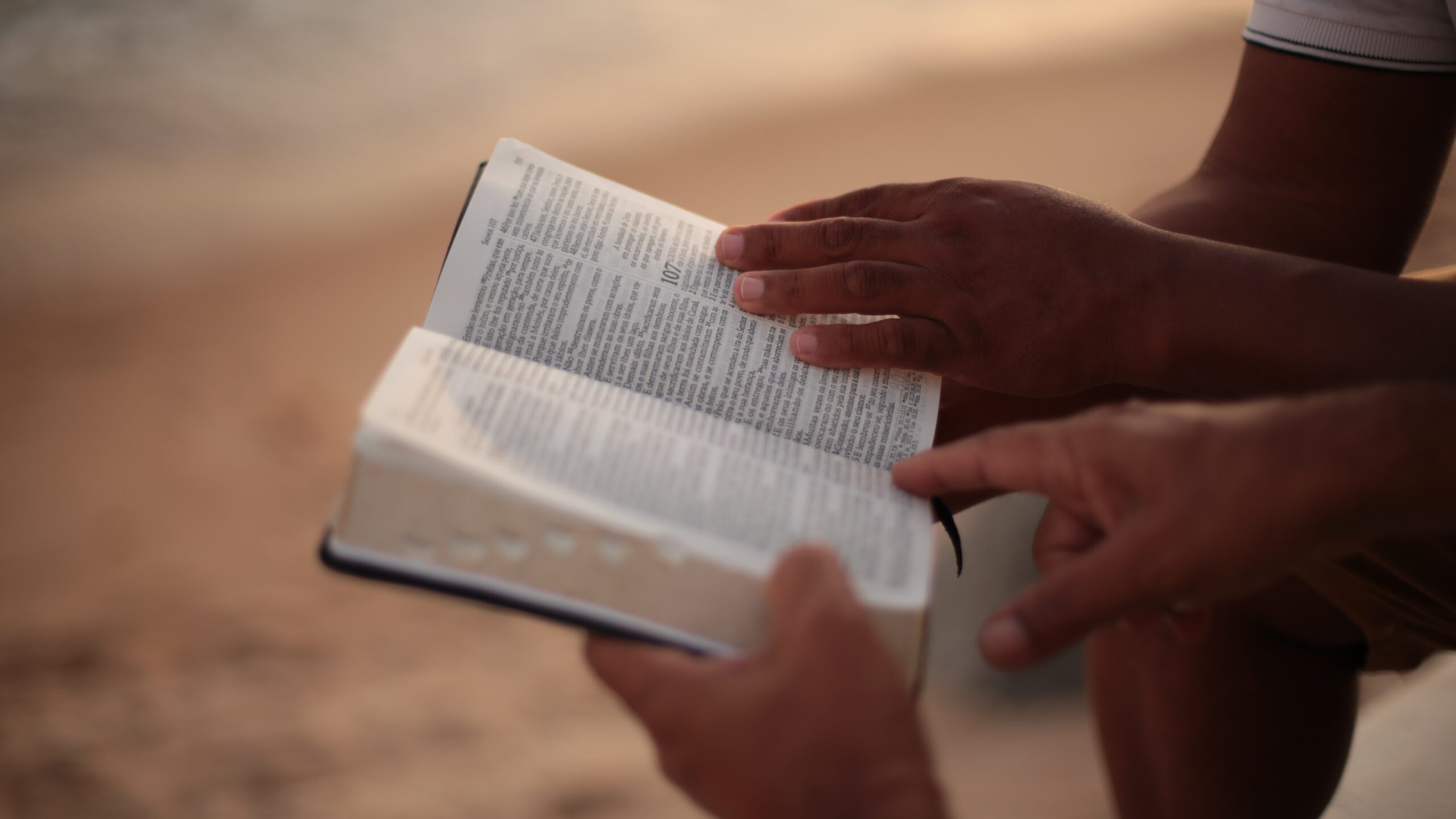John 20:1-9
“Early on the first day of the week, while it was still dark, Mary Magdalene went to the tomb and saw that the stone had been removed from the entrance. So, she came running to Simon Peter and the other disciple (John), the one Jesus loved, and said, “They have taken the Lord out of the tomb, and we don’t know where they have put him!”
So, Peter and the other disciple started for the tomb. Both were running, but the other disciple outran Peter and reached the tomb first. He bent over and looked in at the strips of linen lying there but did not go in. Then Simon Peter, who was behind him, arrived and went into the tomb. He saw the strips of linen lying there, as well as the burial cloth that had been around Jesus’ head. The cloth was folded up by itself, separate from the linen. Finally, the other disciple, who had reached the tomb first, also went inside. He saw and believed. (They still did not understand from Scripture that Jesus had to rise from the dead.)
Commentary:
Wow! This is a lot to take in. And a timely message for the week after Easter. Remember when Jesus was arrested in the garden all of the disciples fled in fulfillment of Scripture. Jesus quoted the prophet Zechariah in Matthew 26:31, Then Jesus told them, “This very night you will all fall away on account of me, for it is written: “I will strike the shepherd, and the sheep of the flock will be scattered” (Zech. 13:7). While Mary Magdalene was visiting the tomb, the disciples were all hiding in fear.
However, when she returned with the news of the empty tomb, Peter and John came running. Not only did they see the empty tomb with their own eyes, but they noticed more. There was something about the linen grave clothes. Why did John write these specific details about the grave clothes? There must be some significant meaning to this!
The following is taken from an article written by Dr. Lance Wallnau, director of the Lance Learning Group, a strategic teaching and consulting company based in Dallas, Texas. [Given the importance of this evidence I’m including most of his article!]
Esteemed Jewish scholar Simon Greenleaf, founder of Harvard Law School, meant to use his “laws of evidence” to challenge the theory of the resurrection, and became a believer…
When Peter and John entered the sepulcher, they did not see the body of Jesus; but they did see the grave clothes. And they saw the clothes in a certain order. John covers the exact arrangement of the clothes. It is the sole purpose of nine verses of the Gospel history. Why so great a detailed account? Because it was important! It was the linen strips that caused him to believe. Scripture clearly tells us that when John “saw the arrangement of the grave clothes, he believed, beyond all doubt, that Jesus was risen.”
These grave garments were arranged in a unique way. When John saw “the linen clothes lying,” he believed. The word “lying” does not merely refer to the fact that they were “remaining on the floor of the sepulcher,” but rather, the word used, means that they were “lying precisely as the body had lain in them.” The grave clothes were in exactly the position the body had occupied.
The linen couldn’t lie. “Linen clothes” refer to the manner in which they prepared the body for burial in that day. They would wrap the body with a wide long cloth, somewhat like a bandage is applied to an injured leg or arm; the wrappings continued until they reached the neck.
This was the method they used to prepare the body of Jesus for burial. Like a giant bondage, these wrappings were wound around the body of our Lord, beginning at the feet, and ending at the head. John saw these “linen clothes lying” undisturbed, just as they had been when the body of Jesus lay within them, but now there was no body, the linen clothes were empty!
John 19:39-40 tells us that Nicodemus and Joseph of Arimathea brought about a 100 pounds of myrrh and aloes spices and wound the body of Jesus in the cloth wrappings with the spices. As they wrapped the cloth strip around and around Jesus’ body, they poured in 100 pounds of spices into the wrappings and upon the body. All these liquid spices would soon harden and would cause the cloth wrappings to become an encrusted cocoon around the body of Jesus…The only way, humanly speaking, a body could be removed from such encrusted wrappings, would be by cutting the cloth from end to end and laying back each side so the body could be pulled from its wrappings…
When the disciples saw the “linen clothes lying” –- uncut, undisturbed, lying just as they had been, yet they were empty –- it convinced them that the body had been miraculously, supernaturally removed. Had some human hand stolen the body, he would have been forced to slit open the bindings in order to remove the body. Likewise, Greenleaf concluded, had Jesus revived and exited the tomb he could not have left the wrapping undisturbed.
The Greek words translated, “wrapped together” in John 20:7, actually mean, “twisted together” or “rolled up” –- it speaks of a fixed position – much like a cocoon. The linen cloths were “wrapped” or “rolled together,” however the body was missing. The “linen clothes” had not been unfolded, loosed or disturbed in any way! They just lay there! An empty shell of the linen clothes that had been wrapped around and around the body of Jesus.
THE COCOON WAS EMPTY… The TOMB was empty… What do you think?
As we celebrate Easter, try to imagine what it must have been like for John and Peter as they gazed into the empty tomb and beheld the linen clothes lying in such a way that convinced them Jesus’ body must have risen through them. This explains why it says, “He (John) saw and believed.” He didn’t yet understand everything; however, the pieces were beginning to fall into place. When the Holy Spirit came upon him at Pentecost, the final piece was in place and John’s faith was complete. The evidence is in. The verdict is rendered. Christ is risen! Christ is risen indeed!



